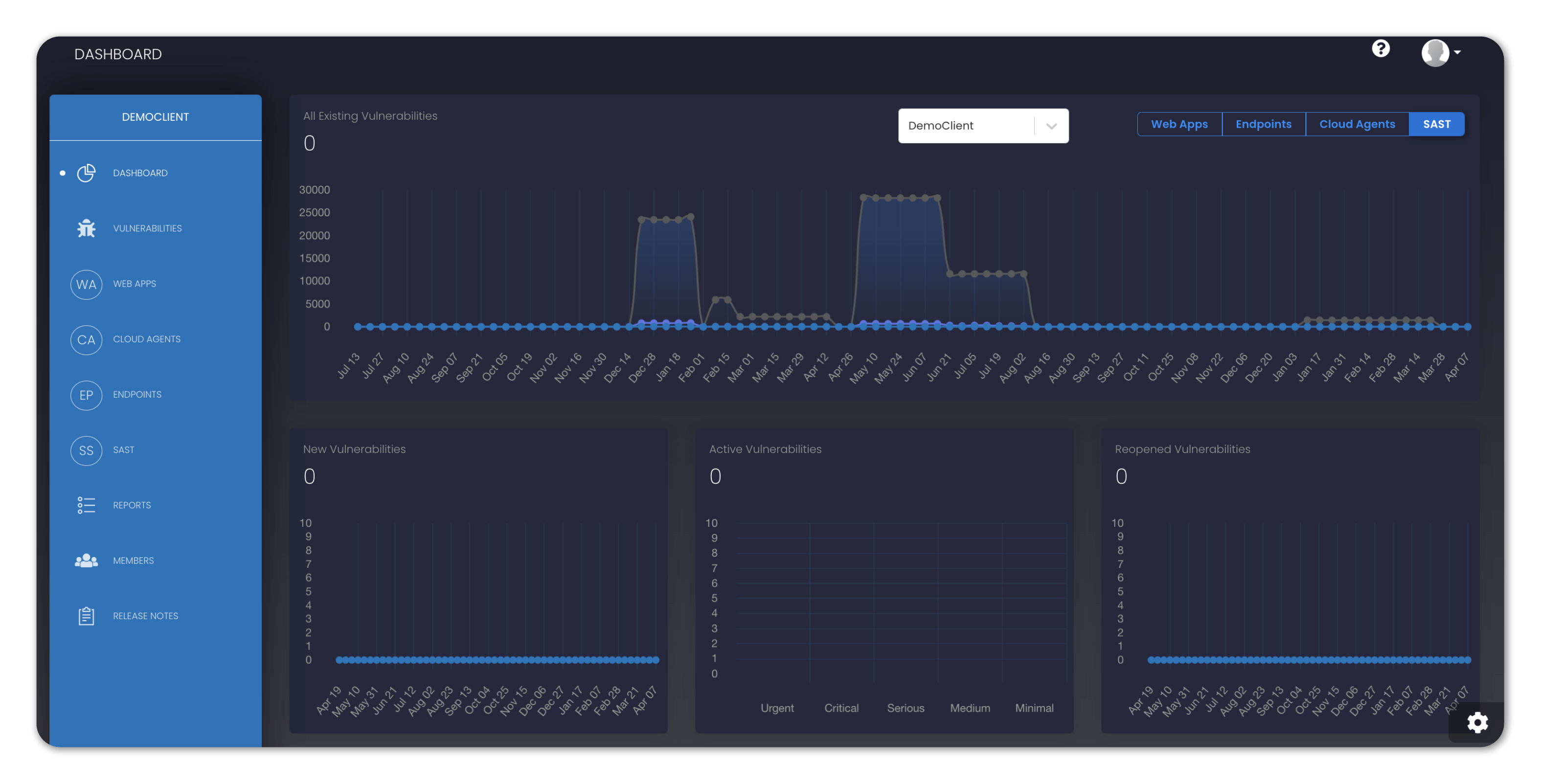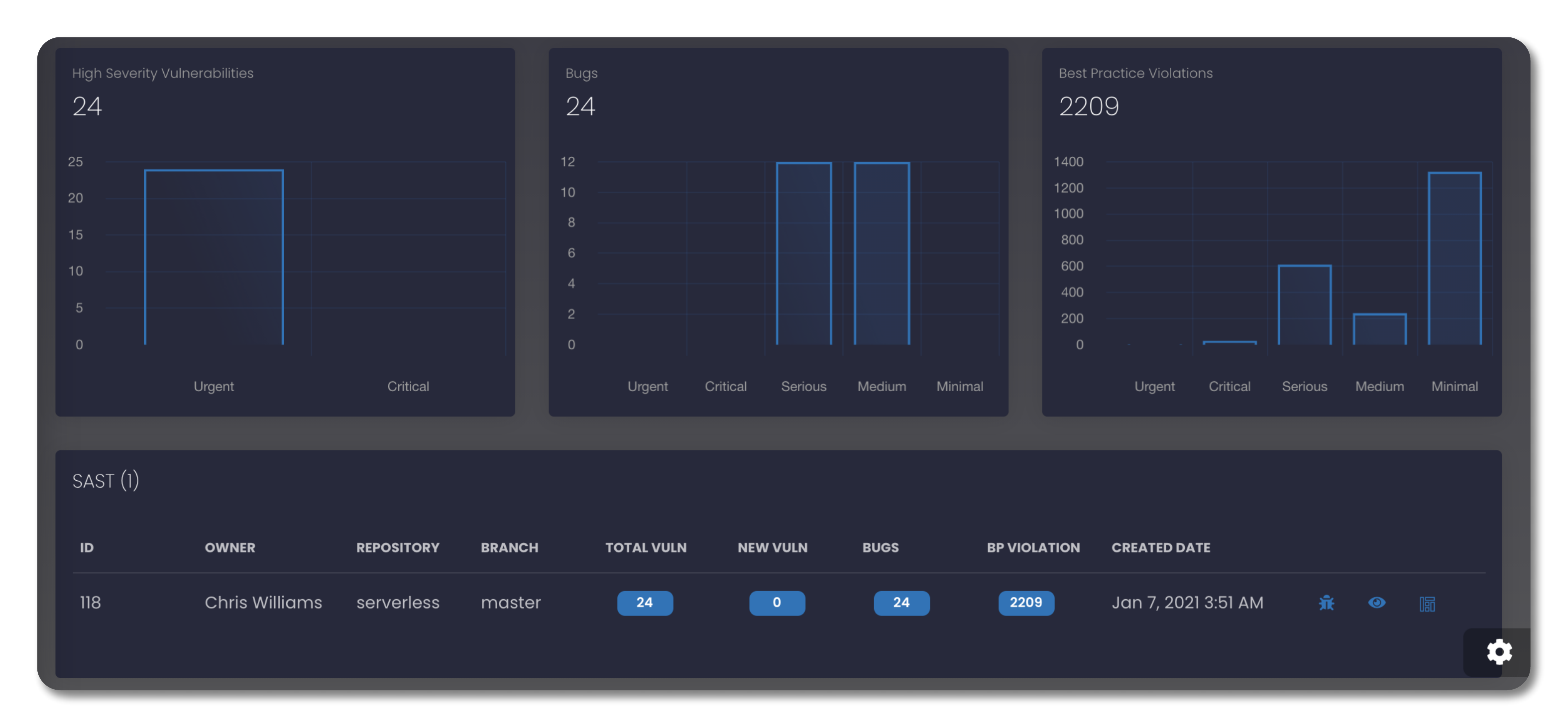SAST Dashboard
** Security Program 360’s ** (SP360) SAST functionality enables continuous code inspection by scanning source code to identify potential security vulnerabilities, bugs, and best practice violations. It can integrate with your existing workflow to enable continuous code inspection as a part of your CI/CD pipeline. This helps to ensure the quality of code and security measures prior to deployment to customer accessible environments and can work as an integral part of a continuous integration regime.
The SAST scans provide an organized and unified view of Vulnerability Counts concerning connected Code Repositories from various cloud source such as GitLab, GitHub, Bitbucket, Azure Devops and others. SP360 scans your connected organizational repository each time a change is submitted and displays the vulnerabilities data in graphic format (as shown below) segmented as:
• All Existing Vulnerabilities
• New Vulnerabilities
• Active Vulnerabilities
• Reopened Vulnerabilities
• High Severity Vulnerabilities
• Bugs
• Best Practice Violations

| Graph Types | Definition |
|---|---|
| All Existing Vulnerabilities | SP360 scans all targeted code repositories for vulnerabilities each time a code change is submitted and displays the total number of outstanding vulnerabilities. Most organizations find this very insightful because it indicates whether they are keeping up with the backlog of vulnerabilities. |
| New Vulnerabilities | SP360 will also track newly discovered vulnerabilities (i.e., in the last week). Most organizations find this insightful and will correlate these numbers to their most recent development efforts. |
| Active Vulnerabilities | SP360 will partition the known vulnerabilities by their criticality since most organization will address the high priority issues first. |
| Reopened Vulnerabilities | A reopened vulnerability is one that was previously considered closed but has been rediscovered. Obviously, organizations do not want to be reverting to old problems, which makes highlighting this scenario valuable. |
| High Severity Vulnerabilities | This chart denotes specific vulnerability types that are high priority, and to some extent overlaps with one of the previous charts. Its purpose is to highlight vulnerabilities that should get immediate attention. |
| Bugs | This chart denotes the bugs that are present in your organization code repository. It helps in correcting tricky bugs to prevent undefined behavior that can impact end-users. |
| Best Practice Violations | This chart denotes the Best Practice Violations within the code. |
Further down the Dashboard, one can see the Vulnerability Counts partitioned by the individual repository, which is most easily recognized by repository and branch names.

Every repository has three available action buttons as indicated by the icon on the right side of each ID:
| Icons | Definition |
|---|---|
| This icon will redirect you to the VULNERABILITIES page, where you can get the list of all vulnerabilities for that specific Endpoint | |
| This icon will show the additional details related to each specific vulnerability, in a popup window. . Information such as the location of the vulnerability and a potential remediation. | |
| This icon returns you to the top of the dashboard, which might be helpful if there is a long list of endpoints, and you have scrolled to the bottom. |